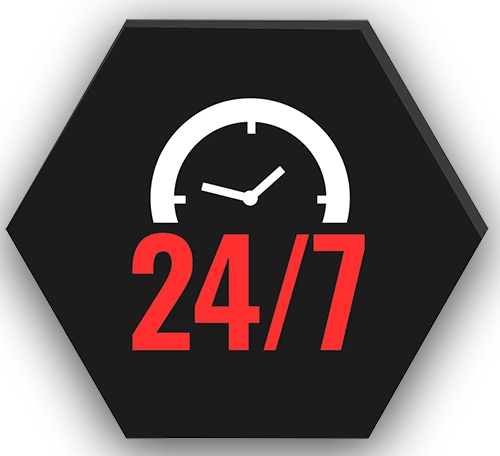Getting a new air conditioner installed is a big step toward better comfort during the summer months in West Valley City. But to avoid future headaches and delays, it’s important to plan carefully before installation day arrives. A little preparation goes a long way when it comes to making the process smoother, faster, and more efficient. Without proper planning, even the best AC system might run into preventable problems once it’s in place.
Having a clear pre-installation checklist helps line everything up from day one. It’s not just about choosing the right equipment—it also includes getting your home ready and ensuring compatibility with your existing setup. Whether you’re replacing an older unit or setting up a system for the first time, knowing what to expect before the work begins can save time, reduce surprise costs, and help the system run the way it should right from the start.
Evaluate Your Home's Cooling Needs
Before choosing an air conditioner, it’s important to figure out what your home actually needs. A unit that’s too large or too small can lead to uneven cooling, higher energy bills, and long-term wear. Getting the size right starts with looking at the layout and square footage of your home. Think about how many floors you have, ceiling height, and how often each room is used.
The amount of insulation also makes a big difference in how well your AC performs. Poor insulation makes it harder to hold onto cool air, meaning the unit has to run longer to keep up. The same goes for how many windows you have, especially if they face direct sunlight for most of the day. Rooms with lots of windows tend to heat up more, requiring stronger cooling in those areas.
Here are a few things to review when evaluating cooling needs:
– Total square footage of the home
– Number of levels within the house
– Size and direction of windows
– Type and condition of insulation
– Any commonly hot or hard-to-cool rooms
For example, a homeowner in West Valley City upgraded to a larger AC unit thinking it would cool their home faster. Instead, the oversized unit cycled on and off too often, leaving the air feeling damp and inconsistent. It turned out their house needed better airflow improvements, not extra cooling power. Taking time upfront to assess these factors can help avoid similar issues and lead to a better long-term setup.
Prepare the Installation Site
Once you know what type of system your home needs, the next step is prepping the areas where the AC equipment will be installed. Both the indoor and outdoor components need the right space, enough airflow, and easy access for our technicians.
For indoor units, the location should allow good air circulation without being blocked by furniture or walls. The space should be clean, dust-free, and away from heat-producing appliances. For central units, accessibility to your air handler or furnace matters too. You don’t want something tucked into a tight corner that makes service or maintenance harder down the line.
Outside, the condenser should sit on a level surface with open space around it. Avoid placing it next to heavy landscaping, property fences, or areas prone to water buildup. The unit needs good air clearance to release heat properly. Also, confirm there’s enough space for our technicians to safely move around during setup and future maintenance.
A quick checklist for prepping the installation areas includes:
– Clear a working space indoors where the unit will go
– Open up enough room around the outdoor unit
– Trim back trees or shrubs near the condenser
– Make sure outdoor surfaces are even and stable
– Check that existing wiring and electrical outlets are up to code
Even small details—like having the right foundation pad outdoors or ensuring indoor wall space isn’t too close to ceiling beams—can affect installation speed and long-term performance. Getting the site ready helps our technicians finish the job efficiently and helps your system work right from the start.
Verify HVAC System Compatibility
Before any new AC unit goes in, it’s worth checking how it pairs with your current HVAC setup. A mismatch in equipment can cause poor performance, airflow problems, and system failure down the road. For residents in West Valley City swapping out an older unit, the existing furnace, blower, or ductwork might not support the size or features of the new system.
Start by reviewing the condition and layout of your ductwork if the new system uses it. Old or damaged ducts with leaks or poor insulation can cut into efficiency and cooling power. Even if the ducts seem fine, they may need to be cleaned to prevent dust and debris from spreading once the new unit powers on. If your system doesn’t use ducts, wall and ceiling configurations should be reviewed to confirm they’ll support secure mounting and proper airflow.
Homeowners sometimes find that older breaker panels or wiring aren’t compatible with newer AC systems, especially those with higher-grade energy efficiency or multi-zone features. In these cases, electrical upgrades may be necessary before installation can begin. Trying to run a modern AC unit on outdated wiring may trip breakers or restrict power, causing the system to underperform.
If any of the following apply, allow time for modification before the installation:
– Ducts haven’t been cleaned in several years
– Breaker panel is older or has limited slots
– You’ve added rooms or changed insulation since the last AC install
– You’re switching to a different AC type or size
– There are airflow problems in certain zones of your home
By double-checking the system compatibility, you’ll avoid frustrating delays on installation day and help your new AC last longer.
Schedule a Professional Inspection
After reviewing your home and HVAC system, one of the best steps before installation is calling in our professionals for an inspection. This visit isn’t just a formality—it helps prevent hidden problems and confirms that everything is ready to go.
Our technicians check more than just the equipment specs. They evaluate how air moves through your home, test the airflow strength, and confirm that the electrical system can support the new unit. They also inspect for any leaks, mold, or dust buildup inside the ductwork or near return vents. These are the kinds of issues that often go unnoticed until the AC trips off for the first time after installation.
The inspection also covers installation clearances. If a tree branch is too close to where the condenser needs to sit, or there’s not enough room near the ceiling for indoor unit airflow, our team points that out during this stage. Having this inspection done early gives you time to address those concerns before the system goes in. That way, installation day doesn’t end with surprises or holdups.
When scheduling the inspection, try to do it at least a week or two in advance of your planned install date. This gives time to arrange any needed corrections, upgrades, or cleanups without scrambling at the last minute.
Ready For A Cool And Comfortable Home
Preparing for an AC installation in West Valley City isn’t just about buying new equipment. It’s about making sure your home, your setup, and your space are all ready so the unit performs well from the start. From checking your cooling needs to clearing the install site, each step in the checklist works together to avoid common problems once your system is in place.
By walking through compatibility checks and scheduling a pre-install inspection, you give your new system the best foundation for long-term use. It’s also the best way to stay ahead of last-minute surprises that can delay installation or make it cost more than expected. AC installation is a big investment, and taking simple, smart steps early helps protect that investment.
Homeowners who take the time to follow this kind of checklist often find that the install goes faster, and the system runs better. More importantly, it keeps your home cool during the hottest weeks in West Valley City—without skipped rooms, uneven airflow, or repeated calls for service. Planning today sets things up for comfort all summer.
Ready to get your home prepped for cooling in West Valley City? Explore the benefits of AC installation in West Valley City and trust Jones Heating & Air Conditioning to help plan each step for a smooth and reliable setup that prevents future complications. For a quick estimate or to book a service visit, please contact us today.






